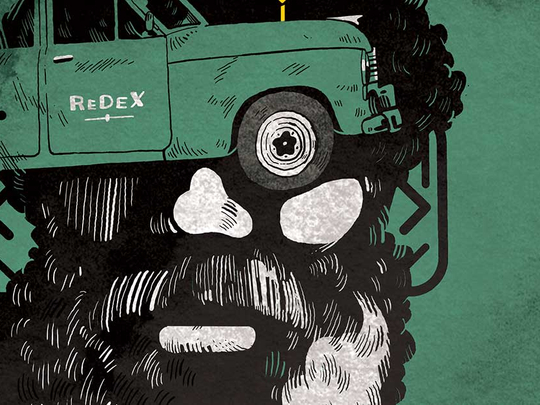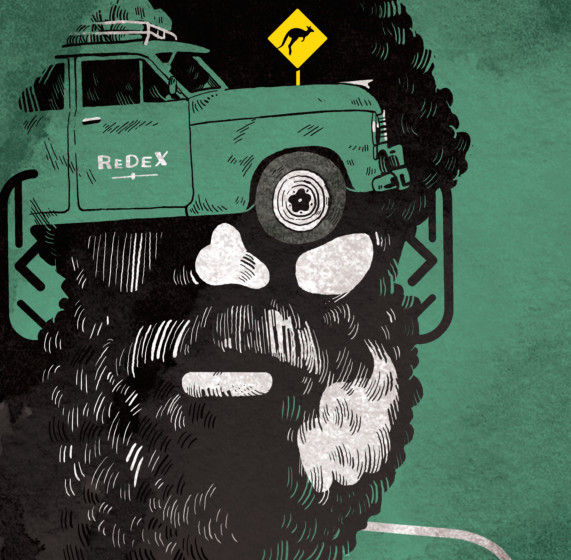
By Peter Carey, Faber, 336 pages, £17.99
I couldn’t have imagined that a car race could be so enthralling. The new novel from double Booker winner Peter Carey is built around the annual Redex Reliability trials in 1950s Australia, in which competitors had to sustain a certain average speed between stops or they lost points. The event became a contest between Fords and the Holdens manufactured by General Motors. It made heroes out of the drivers, who had to cover 10,000 miles around the country in 17 days, often on dust roads, through dried-up rivers and via creeks full of water, and above dizzy drops, in danger from flying rocks kicked up by other cars, and from kangaroos jumping into the road in the dark. They made heroines, too: the women who took part as drivers or navigators were often favourites with spectators and in the newspapers.
Carey’s parents ran a motor business in Bacchus Marsh in Victoria, where the book begins: as a boy he followed the trials with passionate enthusiasm, and he understands their romance from the inside — testing the genius of the cars’ engineering, and the ingenuity and skill of the drivers, against Australia’s raw and resistant natural landscape. This novel is his opportunity to write with love about both the landscape and the engineering. Titch Bobs is the best car salesman in rural Victoria, and enters the trials as a publicity stunt for his new car showroom; he takes along his wife, Irene, mother of their two children.
Driving a car is all in the bum, he unromantically explains, “and her bum is a perfect instrument for the job”. Carey relishes all the detail of their preparation: Irene worrying about the dust in the outback clogging the Holden air cleaner, stretching a stocking over its wire mesh as an extra filter; Titch showing their neighbour Willie Bachhuber how to “remove the shackle bolt from the leaf spring”, jacking the spring up “so the eye moves along the wood to the spot where the shackle can be fitted”.
Bachhuber navigates: brilliantly, because he loves maps and once worked as assistant to the map librarian of the state library. Irene and Bachhuber narrate the novel’s story in more or less alternating chapters, and part of the narrative is the growing attraction between them.
Irene is plucky, capable, generous and impulsive. She has loved and supported tiny Titch through the early years of their marriage because she hated how he was bullied by his braggart of a father, Dan. (His backstory is a feast in itself, with his history in early aeronautics and party tricks with gelignite.) Once Dan is dead, however, Titch begins to develop his own patriarchal swagger, hanging out in bars with the loud power-brokers, imitating their boozing and womanising. No wonder Irene develops a soft spot for poor Bachhuber, who is such a different type of man: crucified by his sexual yearning, poisoned if he ever drinks alcohol, melancholy and gentle and gullible. The son of a Lutheran pastor in Adelaide, he feels disastrously misplaced in the brash Australia of this era. He tries to save himself through reading books and knowing things, winning quiz shows, poring with longing over the maps of a lost Europe he has never even visited.
These two rich, ripe voices, beautifully realised on the page, are the joy of the novel and at the heart of its achievement — just as Ned Kelly’s voice was at the heart of Carey’s True History of the Kelly Gang. The author has such a good ear, such a gift for catching the rhythms of everyday talky, funny rumination, his sentences as crammed with colourful know-how and telling detail as an old attic, or a passage from James Joyce. Here is Bachhuber: “Who would be a man locked inside his skin with only prayer and filthy thoughts for company? Is that God’s plan, that good men should buy disgraceful photographs upstairs from the milliners on Little Bourke Street?” And here’s Irene on Bacchus Marsh: “If there is a prettier war memorial than our Avenue of Honour, I never heard of it. Every tree in the avenue was planted for a local boy that died. Every trunk had its own name. The dead boys are now huge elms and they join together above the road and give a very calm impression.” It’s a Joycean gift indeed, to be able to catch the poetry of the flow of experience in characters who don’t cultivate their poetic sensibility.
The Redex Trial only takes up the first two thirds of the novel’s attention: then its speeding trajectory stalls, and it becomes something rather different. Bachhuber begins to uncover secrets about himself and his real relations to the Lutheran pastor. He is dropped from the trial and can’t get home, ends up in a cattle station in the outback run by racist whites and the Indigenous Australian labourers who work for them. There he is coerced into taking a class of Indigenous children — the last teacher had a nervous breakdown. When he tries to draw a map of his Australia with its roads and place names on the wall of the cave classroom, the children seem incapable of learning it. So he invites in the black elders instead, to draw “the paths of ancestral beings from one place to another”.
This is where Carey himself has located the centre of the novel. He has never directly addressed in his writing before the story of the Indigenous people, and thought it was high time, reporting in an interview that as he wrote he felt the double pulse of necessity and anxiety: “I have to do this; I can’t be doing this.”
In summary his idea feels good: a technology-fuelled race across the mapped surface of the Australian landscape becomes instead a journey inwards, into its true past and its different meanings, and into the race crimes buried shallowly under its surface. And yet the book’s energy seems to lapse in this long section where Bachhuber is stuck in the outback. I think it’s partly a problem with the language and with those voices. Carey wants to break the frame and take us through the picture into a new way of looking, but his character’s kindly period idiom is incommensurate with the depth of his discoveries. Bachhuber can’t plausibly command an adequate expression or tone. The elder sang, he tells us, “with a passion that surprised and moved me”: but we’re not moved alongside him. Irene and Bachhuber narrate in a sort of breathless retrospect, which works while the race pulls the narrative along, but muffles and distances crucial scenes in the outback.
The story of the crimes against Indigenous people is present more hauntingly, because more obliquely, in earlier parts of the novel. As they drive, Bachhuber, with his bookish interest in archaeology, points out to Titch and Irene a tree scarred where a canoe was cut from it, or the site of a massacre. Irene digs up a baby’s skull and keeps it safe in a box on the back seat. A black man knows how to warm their battery when they are stuck. These indirections have more power to suggest absence and resonate with violence than any full-on encounter or lengthy outraged explication. Fiction’s wary circumspection, approaching terrible truths, isn’t to do with whether the writer has a “right” to the material. It’s just a respect for the dark places where words fail.
–Guardian News & Media Ltd










